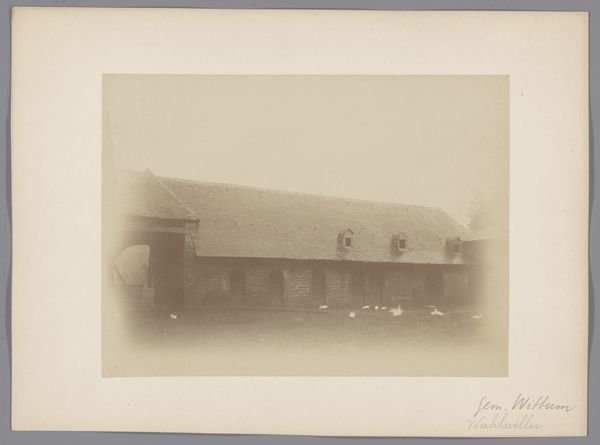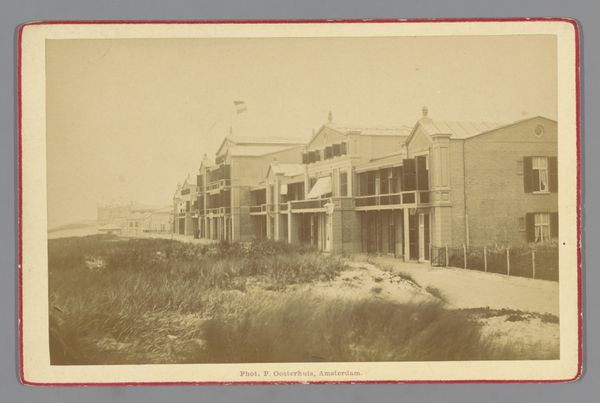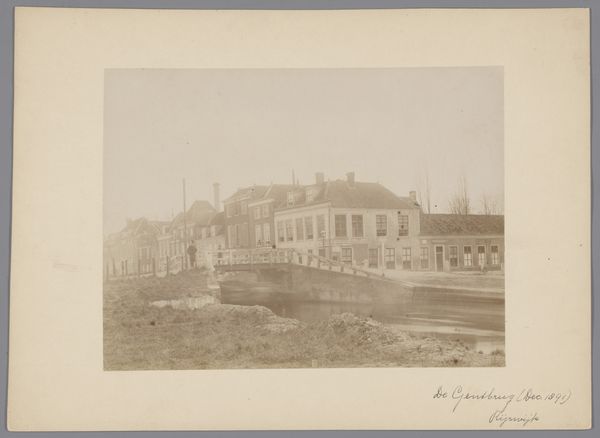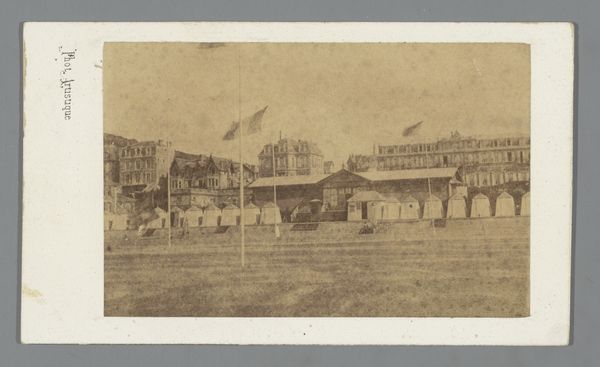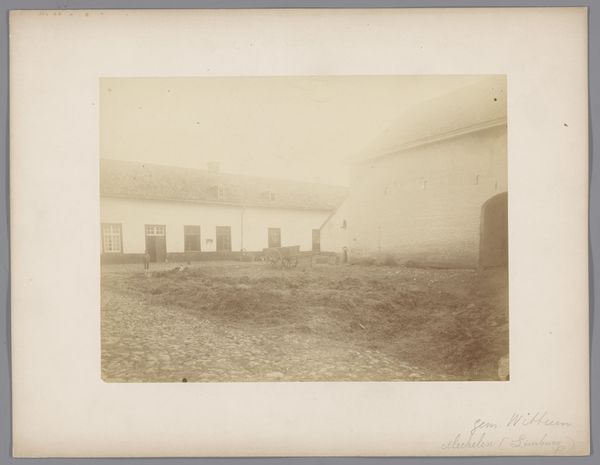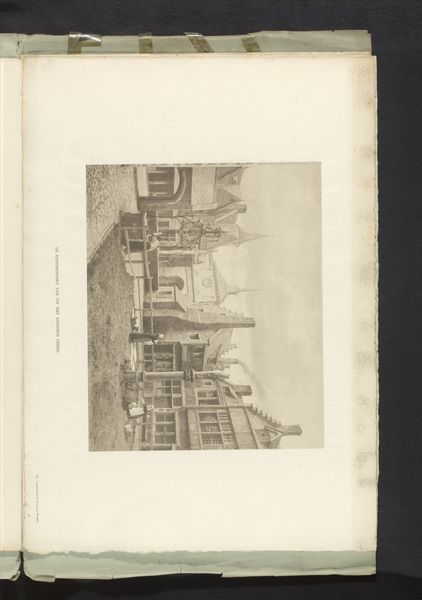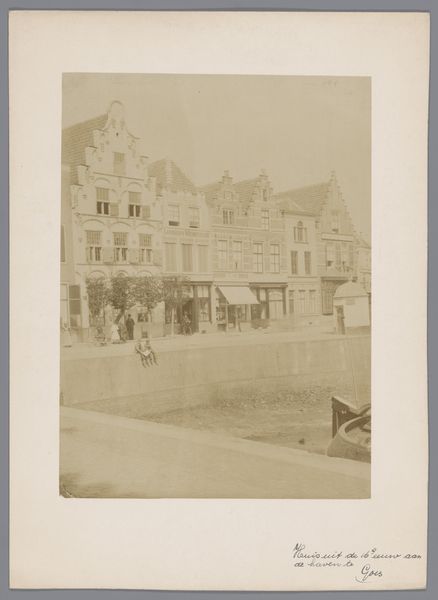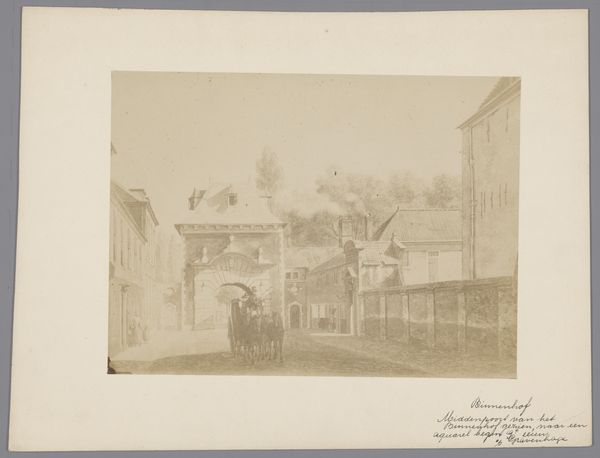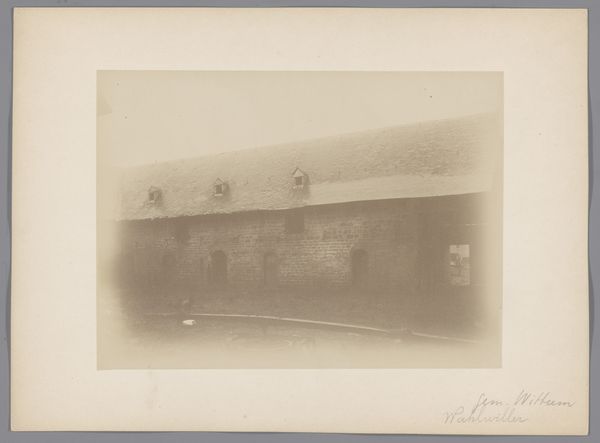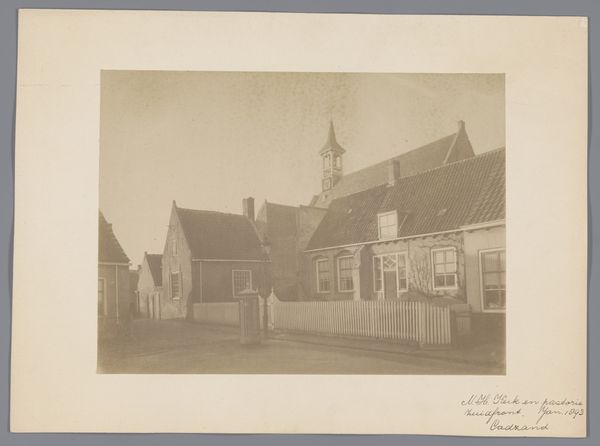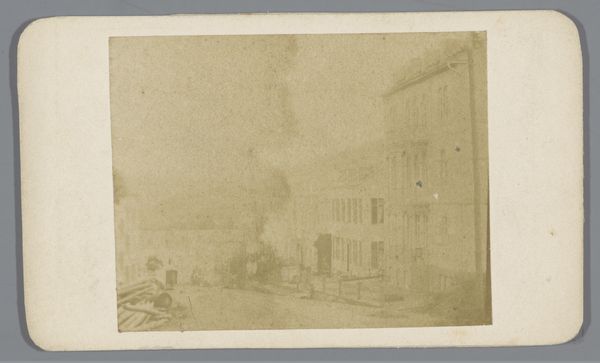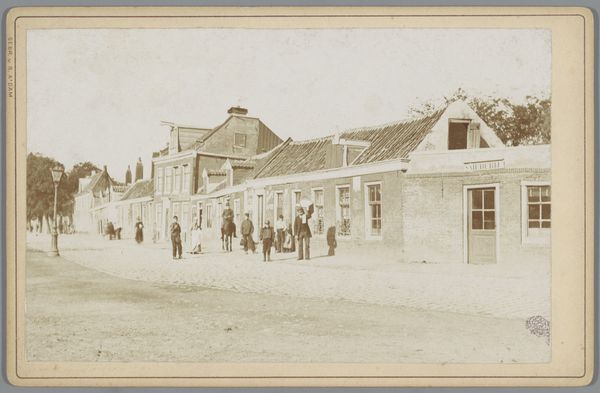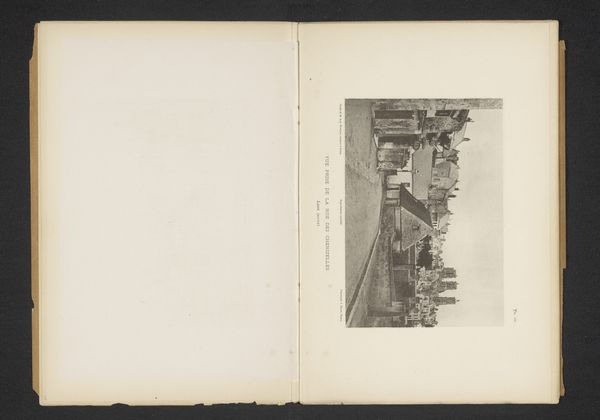
Dimensions: height 169 mm, width 230 mm
Copyright: Rijks Museum: Open Domain
Editor: This is a photograph from 1901 titled "View of the old city wall behind the gymnasium in Maastricht." It seems to depict a slice of ordinary life right up against the historic wall. The sepia tone lends it an air of nostalgia. What aspects of this image strike you most profoundly? Curator: What immediately grabs me is the juxtaposition of the "old" and the seemingly "new" – in 1901 of course. We see the crumbling, medieval city wall being used, almost as a foundation, for everyday structures, implying a changing cityscape. Note the figures with the wagon, likely engaging in some sort of commerce. This imagery serves not just as documentation of architecture but also as an active tableau. Editor: So, the placement of daily activities next to the old city wall, is that supposed to say something about progress and social dynamics at that time? Curator: Exactly. The photograph underscores the tension between preserving history and adapting to modernity. What’s interesting here is: Who commissioned this photograph? Was it for historical record, or for municipal planning? The very act of photographing the wall signifies its perceived importance – or perhaps, its impending disappearance. Consider the politics of representation; how might this image have been used to advocate for preservation or development? Editor: That adds another layer to it. I was just looking at it as a slice of life. Curator: And that's perfectly valid! But let's think: If this image were widely circulated, what kind of public discourse might it have sparked? Editor: That is quite eye-opening, thinking about how art really does affect politics and history. Thanks for the guidance. Curator: It has been my pleasure, and the pleasure's mine, to get me thinking about how photography shapes collective memory and civic identity.
Comments
No comments
Be the first to comment and join the conversation on the ultimate creative platform.
